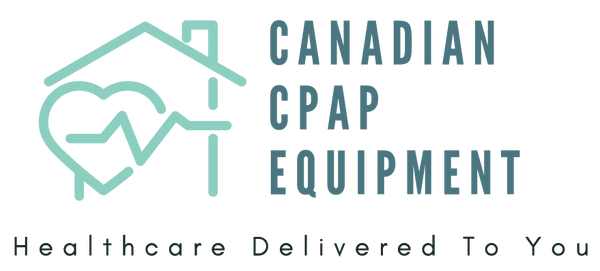Quick Summary: Key Insights
✓ Provincial coverage varies significantly across Canada - Ontario's Assistive Devices Program (ADP) offers comprehensive support covering major costs for eligible residents, while provinces like BC and Alberta tie coverage to social assistance programs, and Quebec and Nova Scotia provide limited direct coverage requiring greater reliance on private insurance.
✓ Private health insurance is the primary funding source for most Canadians - Employer-provided or individual plans typically cover a percentage of CPAP machines, masks, and supplies, but require understanding of deductibles, co-pays, annual limits, and pre-authorization requirements to maximize benefits and minimize out-of-pocket expenses.
✓ Multiple alternative funding avenues can reduce costs - Beyond provincial programs and private insurance, Canadians can access Health Spending Accounts (HSA), claim the Disability Tax Credit (DTC) and Medical Expense Tax Credit on income taxes, explore non-profit assistance programs, and utilize provider payment plans to make treatment affordable.
Receiving a sleep apnea diagnosis is a crucial step towards better health, but for many Canadians, the next question often revolves around the financial aspects of treatment. While Canada boasts a publicly funded healthcare system, coverage for durable medical equipment like CPAP machines and ongoing supplies can vary significantly by province and individual circumstances. Understanding how to navigate insurance and funding options is key to accessing the necessary treatment without undue financial burden.
Provincial Healthcare Coverage: A Varied Landscape
As discussed previously, provincial healthcare plans in Canada primarily cover medically necessary hospital and physician services. Coverage for CPAP therapy and related supplies is not uniform across all provinces and territories. Some provinces offer specific programs or subsidies for eligible residents, while others may provide limited or no direct coverage.
-
Ontario (Assistive Devices Program - ADP): Ontario has one of the more comprehensive programs, where the ADP may cover a significant portion of the cost of a CPAP machine and some supplies for eligible individuals with a long-term physical disability. Other programs like ODSP and OW may also provide support.
-
British Columbia & Alberta: Coverage is often tied to social assistance programs or specific eligibility criteria for individuals with disabilities.
- Quebec & Nova Scotia: Direct provincial health coverage for CPAP therapy has historically been limited, often requiring reliance on private insurance or out-of-pocket payments.
Action Step: Always research the specific programs and eligibility criteria in your province or territory. Your sleep clinic or CPAP provider should be able to offer guidance on local funding options.
The Role of Private Health Insurance
For many Canadians, private health insurance plans are the primary means of covering the costs associated with sleep apnea treatment. These plans are typically provided through employers as part of a benefits package or can be purchased individually.
-
What to Look For: Private plans often cover a percentage of the cost of CPAP machines, masks, tubing, and replacement supplies. Some may also cover the cost of sleep studies or consultations.
-
Deductibles and Co-pays: Be aware of any deductibles (the amount you pay before your insurance starts to cover costs) and co-pays (a fixed amount you pay for a covered service).
-
Annual Limits: Many plans have annual or lifetime maximums for medical equipment or specific benefits.
-
Pre-authorization: Some insurers may require pre-authorization for expensive equipment like CPAP machines.
Action Step: Contact your private insurance provider directly to understand the specifics of your coverage. Ask about:
- What percentage of the CPAP machine and supplies are covered?
- Are there any annual or lifetime maximums?
- Do I need a doctor's prescription or a specific form?
- Is there a preferred provider network?
- What is the process for submitting claims?
Other Potential Funding Avenues
Beyond provincial programs and private insurance, consider these options:
-
Employer Benefits: If you are employed, your workplace benefits package might include a Health Spending Account (HSA) or a Wellness Spending Account (WSA) that can be used for medical expenses not covered by traditional insurance.
-
Disability Tax Credit (DTC): Individuals with severe sleep apnea who meet specific criteria may be eligible for the Disability Tax Credit, which can reduce the amount of income tax they or a supporting family member has to pay.
-
Medical Expense Tax Credit: You may be able to claim eligible medical expenses, including CPAP equipment and supplies, on your income tax return.
-
Non-Profit Organizations: Some non-profit organizations or charities may offer assistance programs or refurbished equipment. For example, the Lung Association in some provinces may have programs.
-
Payment Plans: Many CPAP providers offer payment plans to help make the cost of equipment more manageable.
Maximizing Your Coverage and Minimizing Out-of-Pocket Costs
-
Get a Proper Diagnosis: A formal diagnosis from a qualified medical professional (often following an at-home sleep apnea test interpreted by a respirologist) is almost always required for any form of coverage.
-
Obtain a Prescription: Ensure you have a valid prescription for your CPAP machine and pressure settings.
-
Work with Your Provider: Your sleep clinic or CPAP equipment provider can be an invaluable resource. They often have experience navigating insurance claims and can help you with the necessary paperwork.
-
Keep Detailed Records: Maintain records of all your medical appointments, test results, prescriptions, and receipts for equipment and supplies.
Conclusion
While the financial landscape for sleep apnea treatment in Canada can seem daunting, a combination of provincial programs, private insurance, and other funding avenues can significantly alleviate the burden. Don't let concerns about cost deter you from seeking the diagnosis and treatment you need. The long-term health benefits and improved quality of life that come with effectively managed sleep apnea are an invaluable investment.
Next Steps: The field of sleep medicine is constantly evolving. In our final week, we'll look ahead to the future of sleep apnea diagnosis and treatment, exploring emerging technologies and research.

